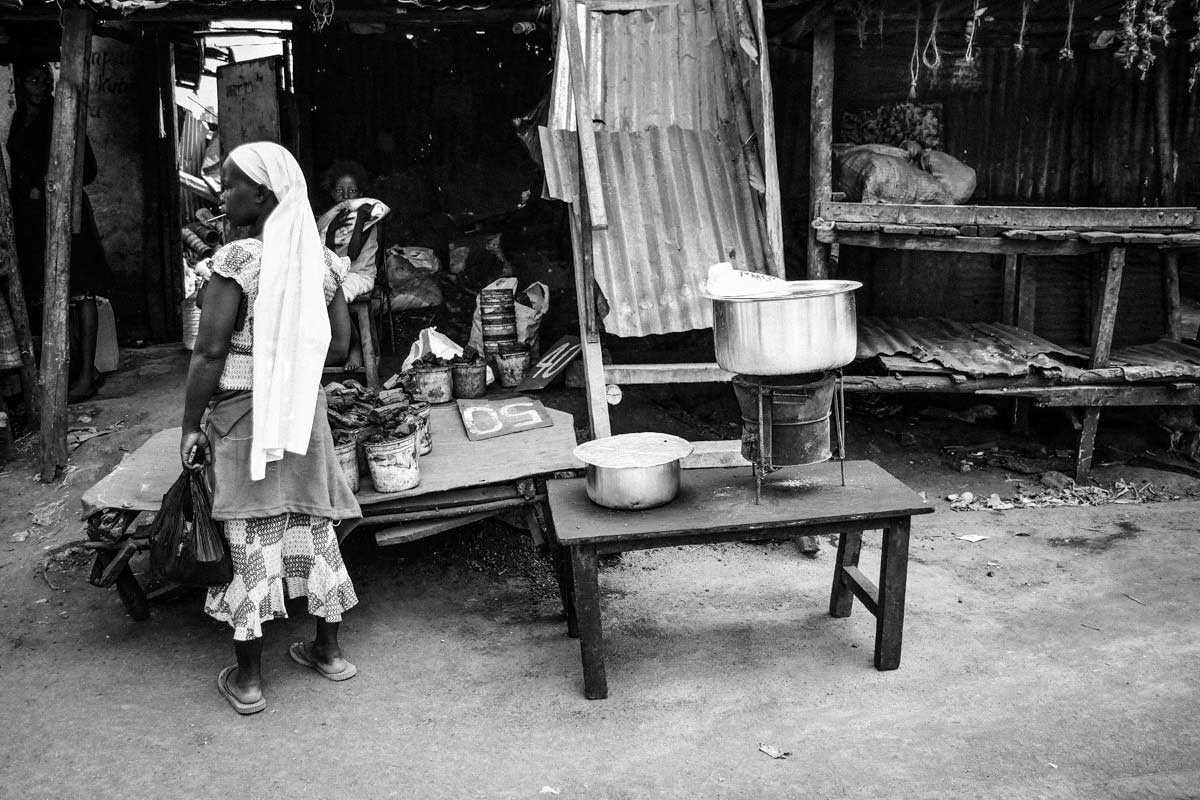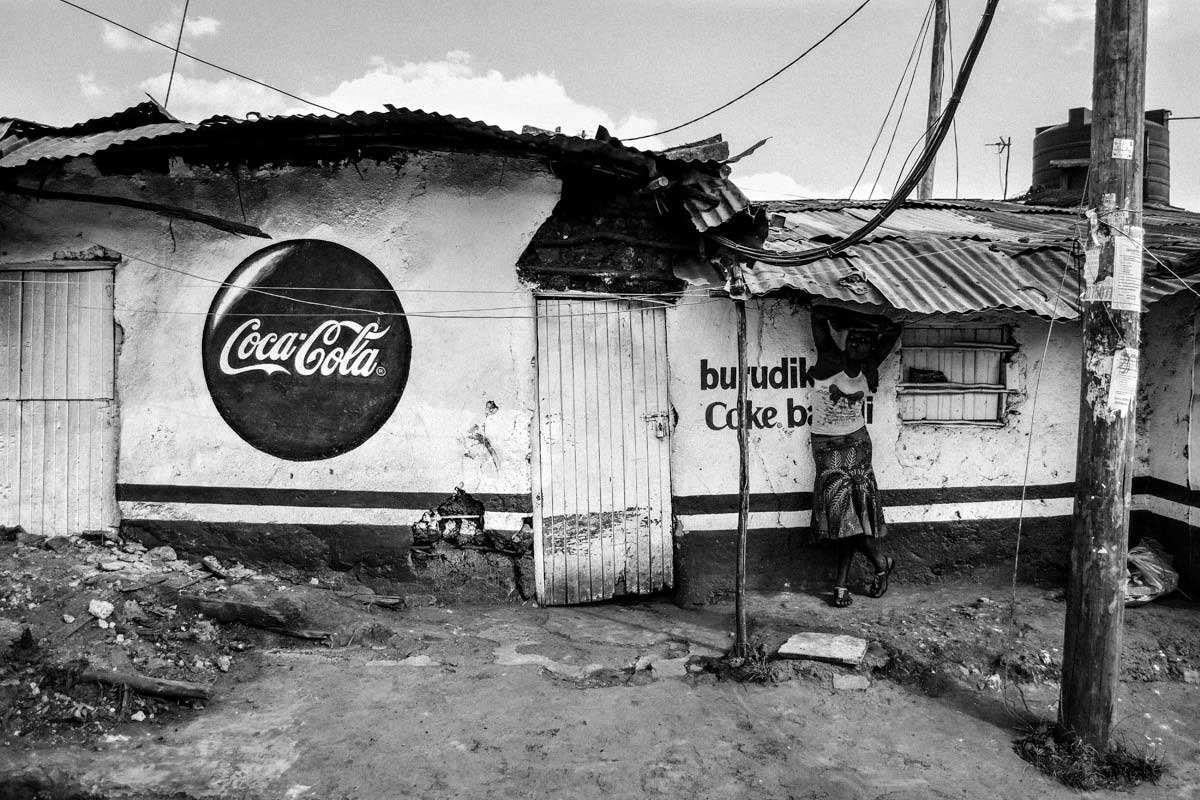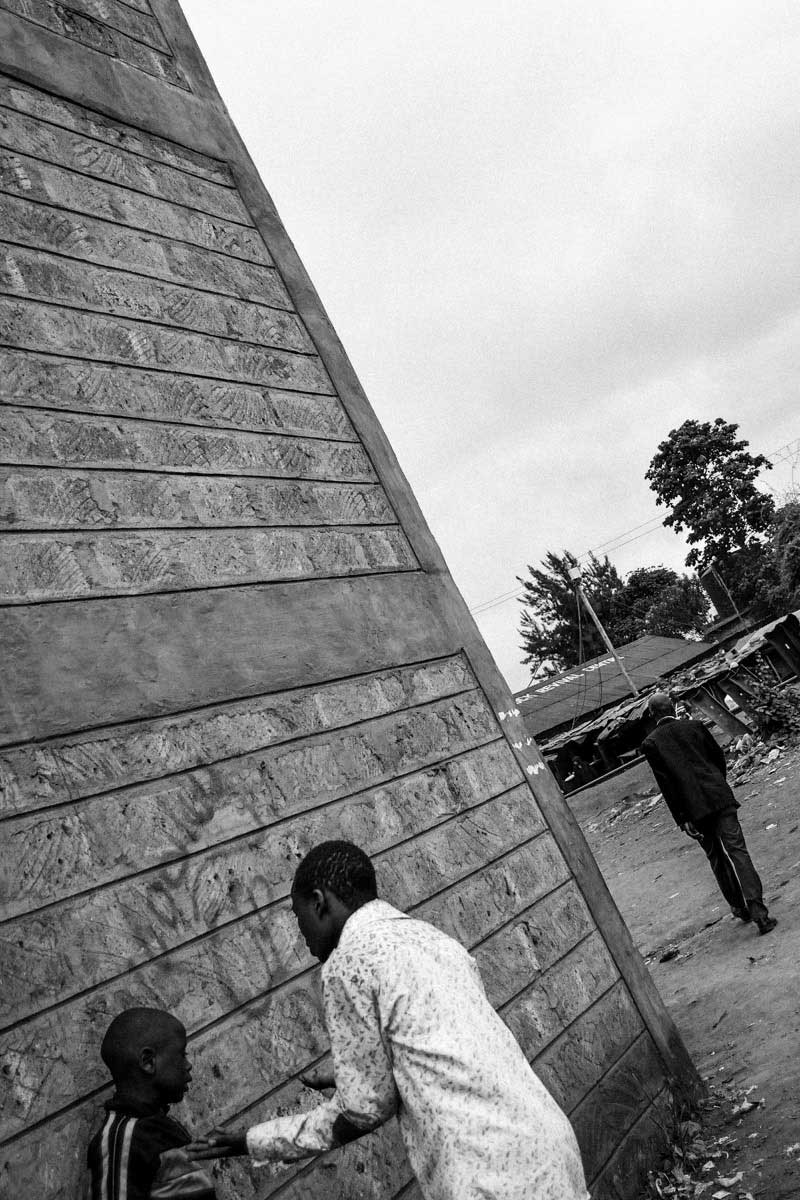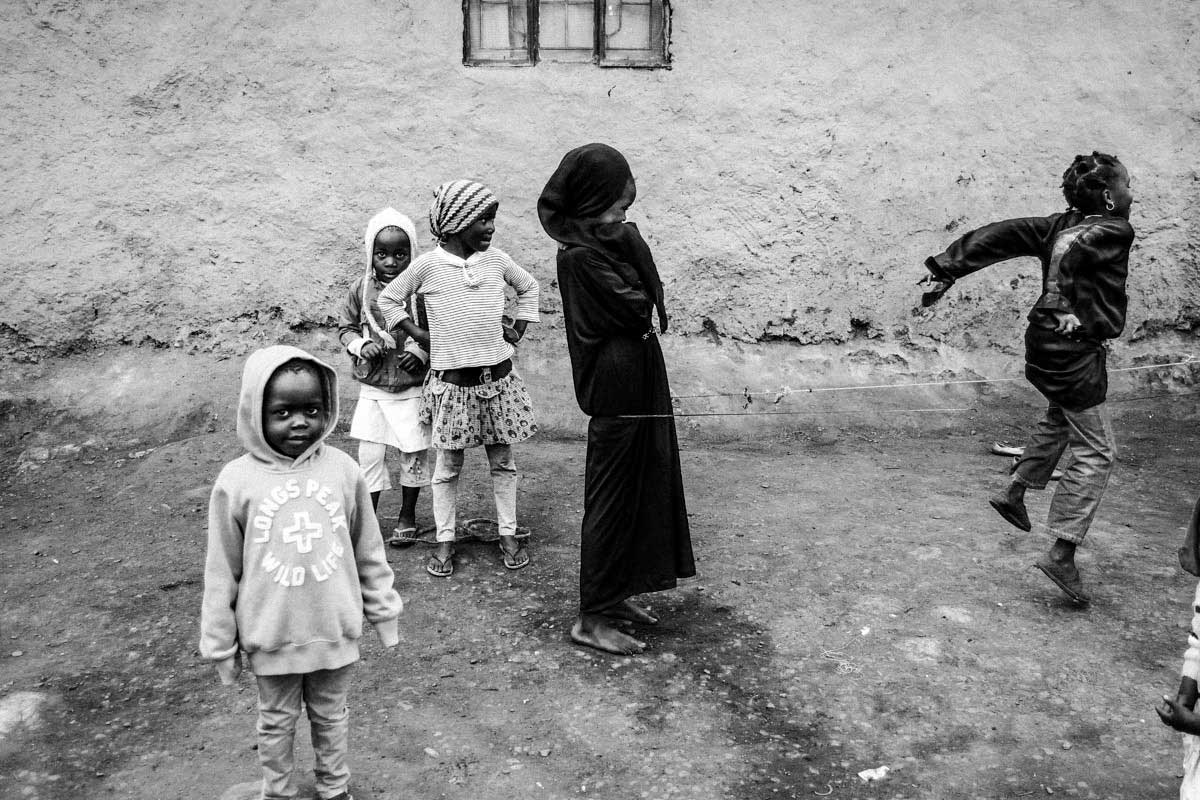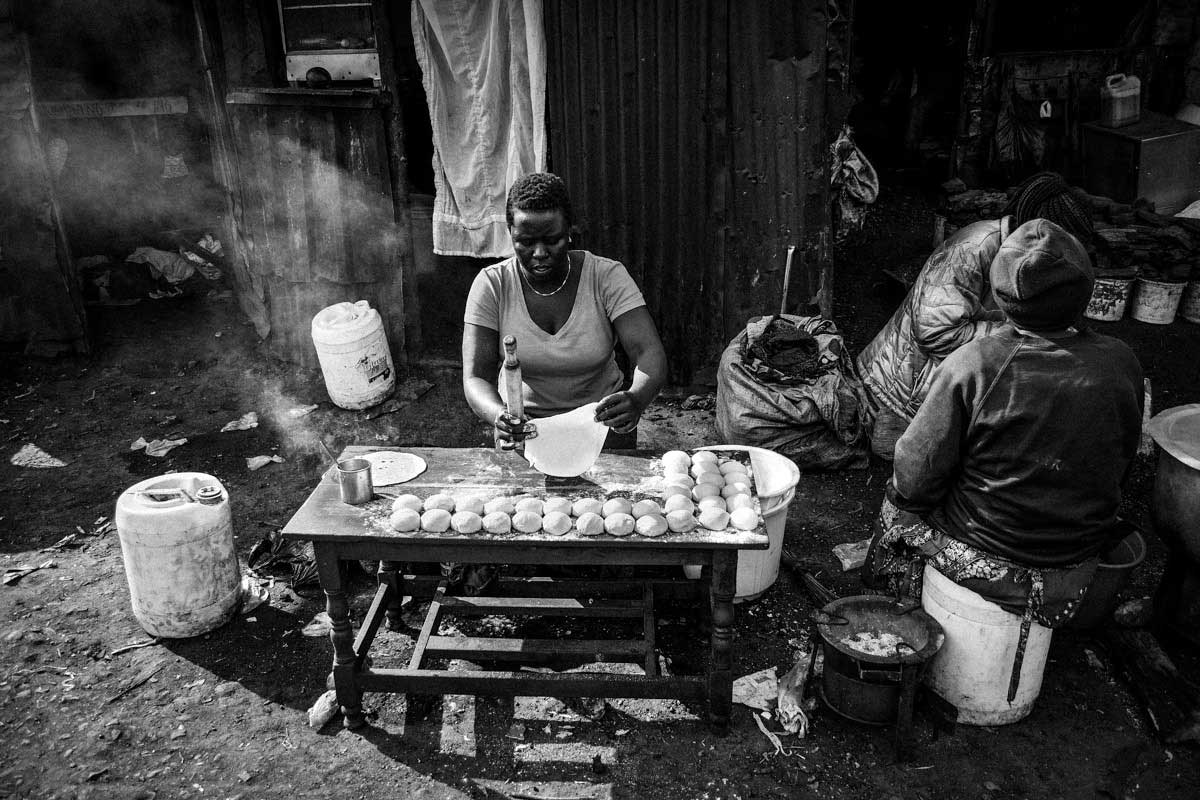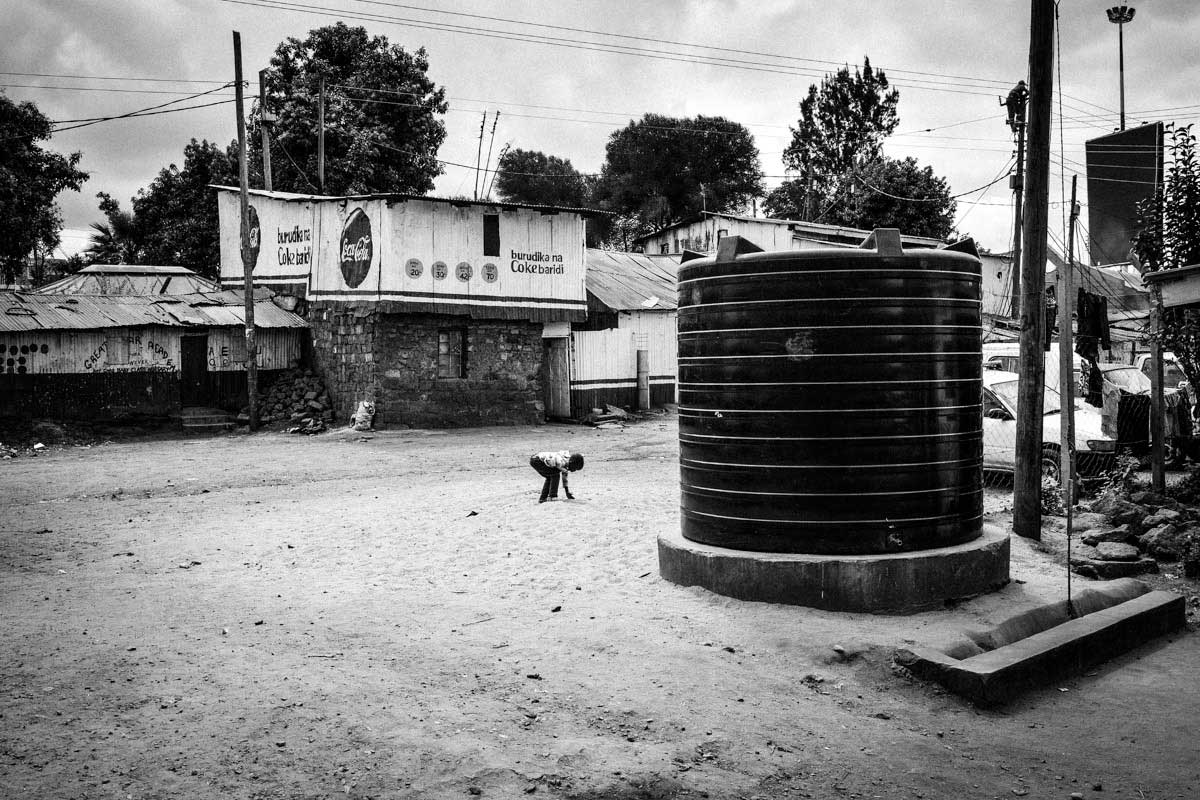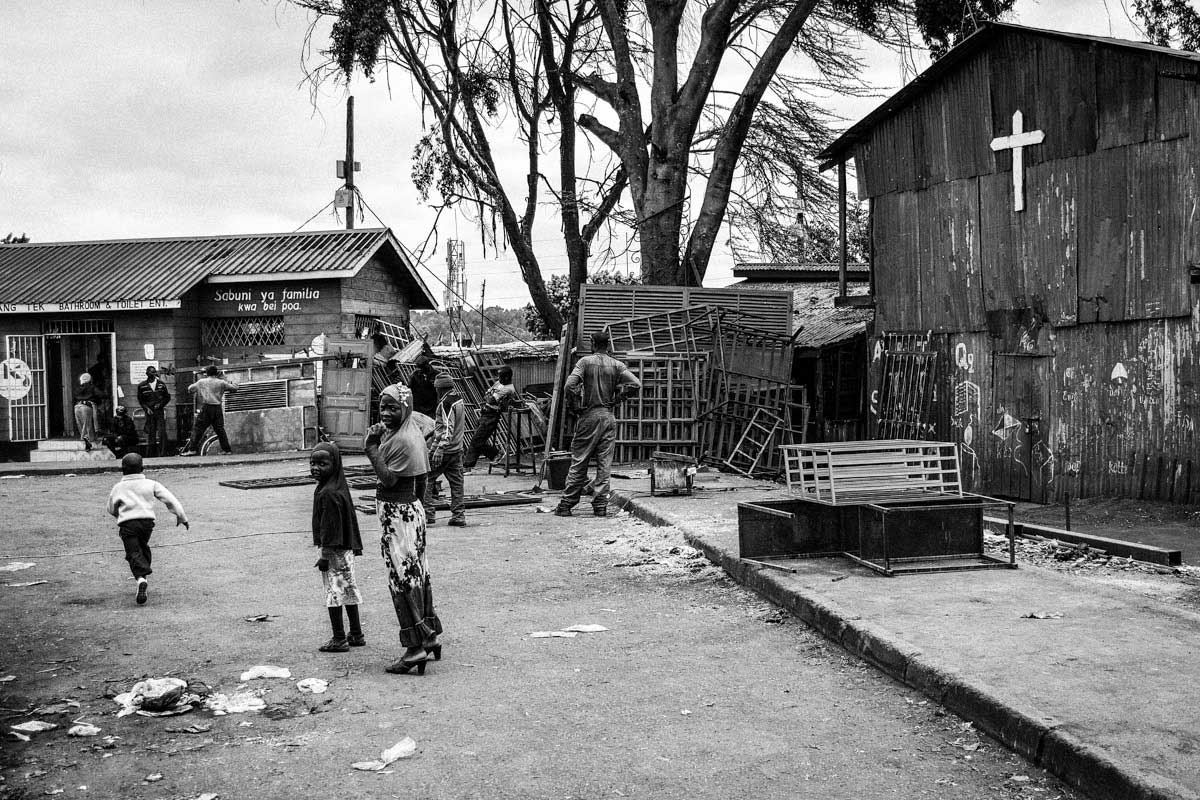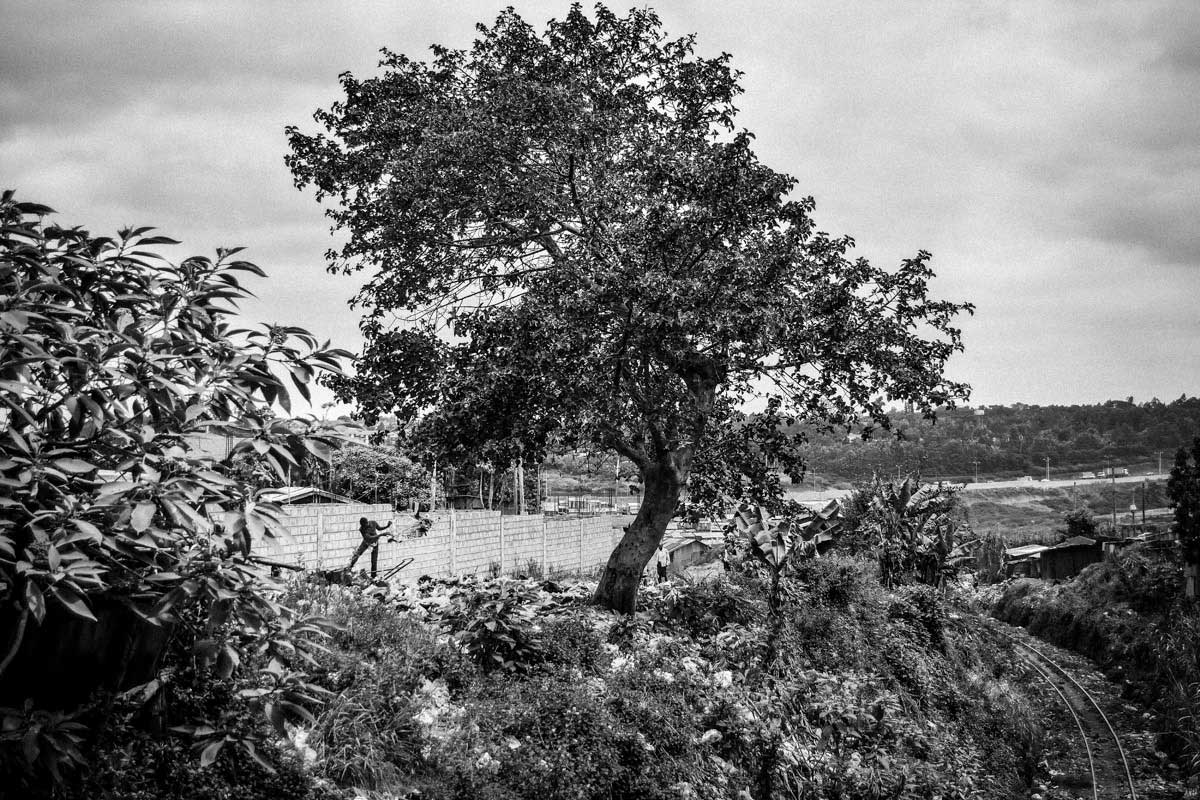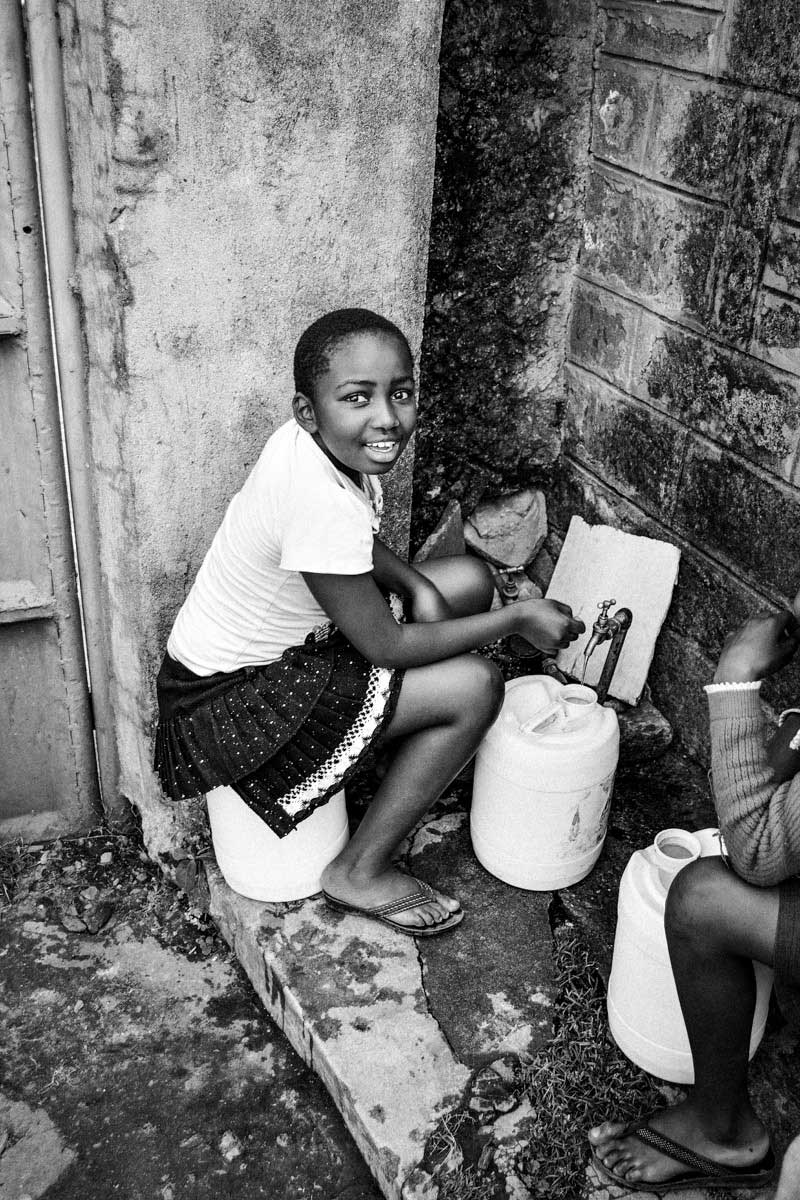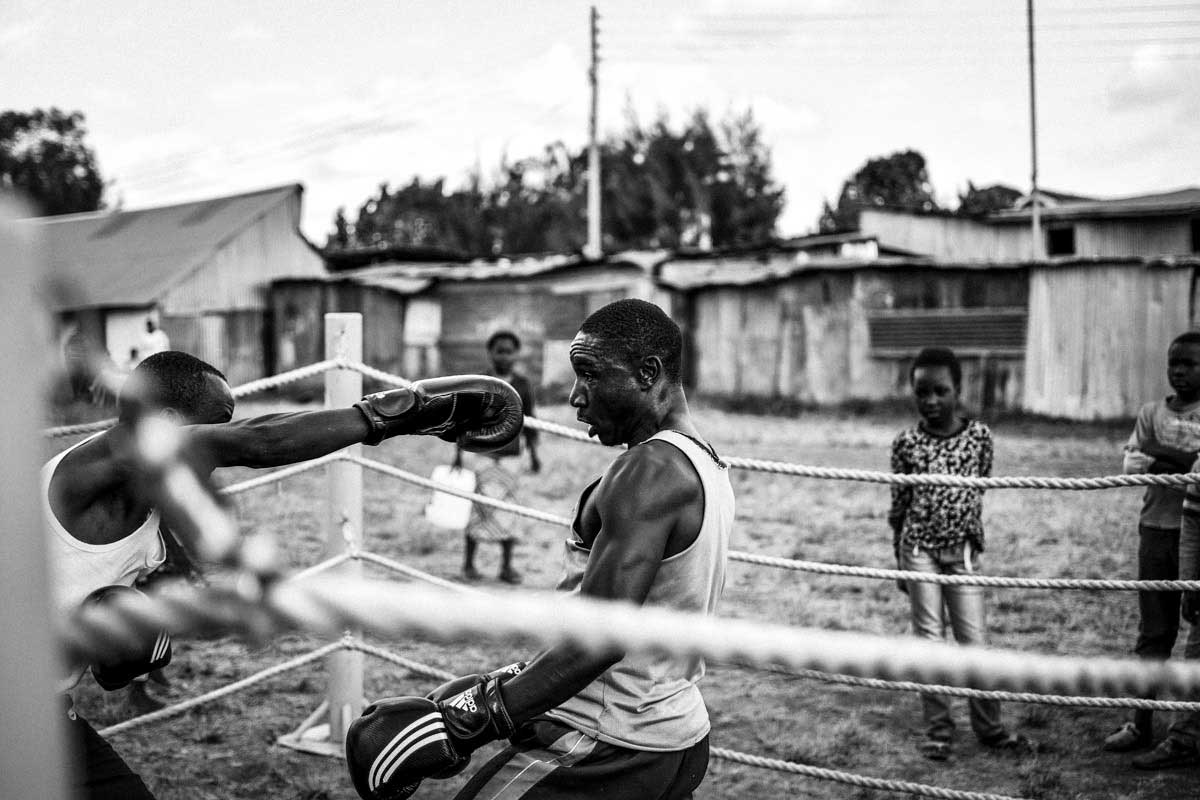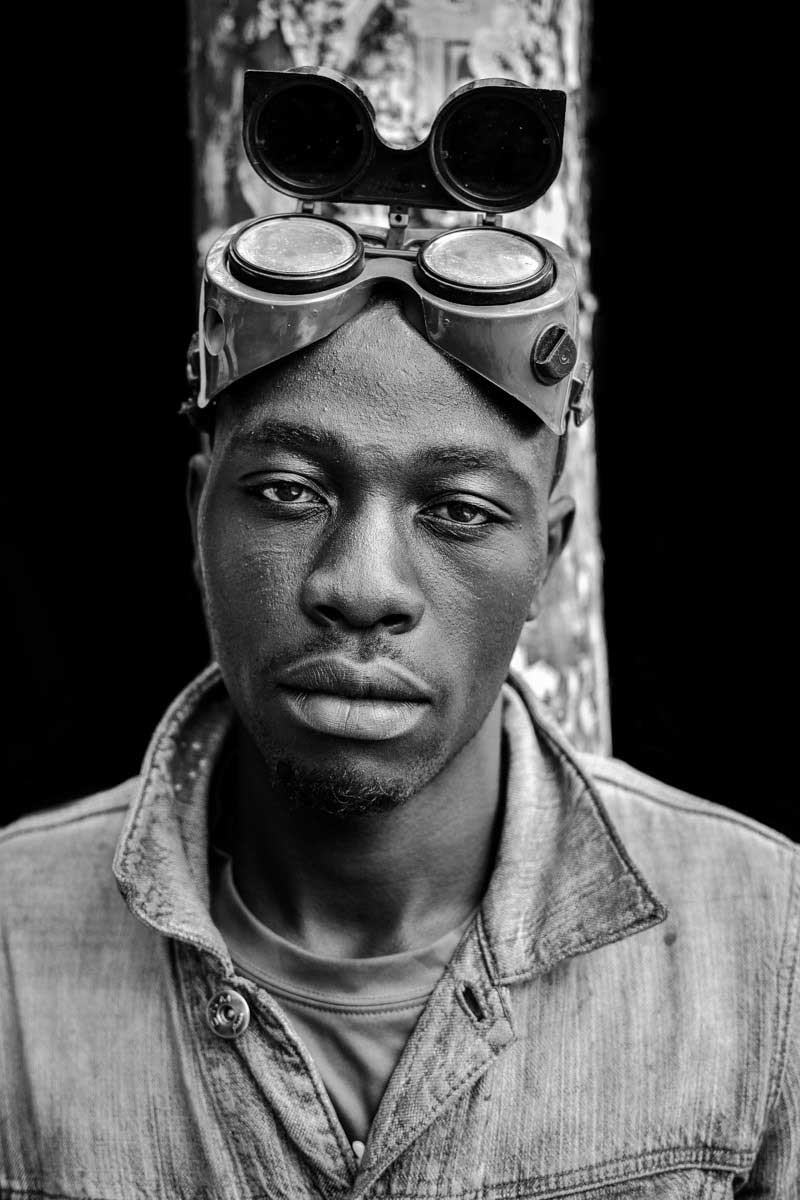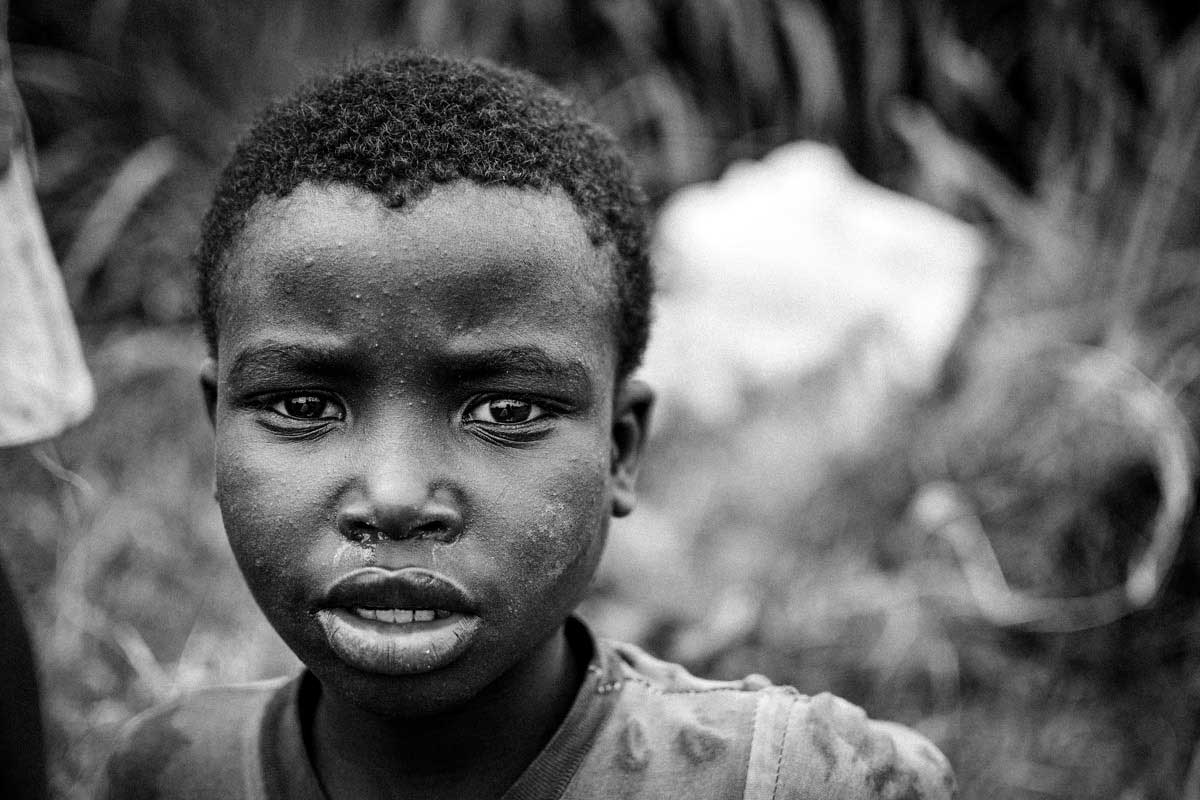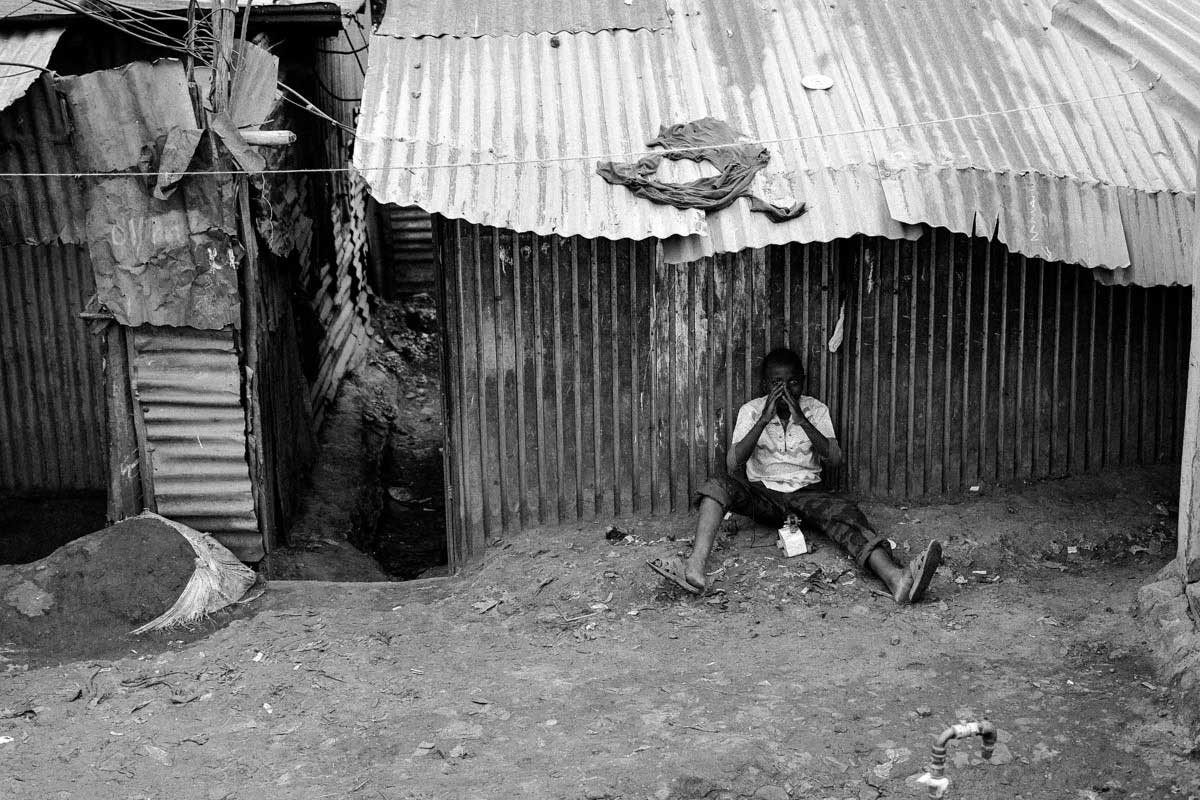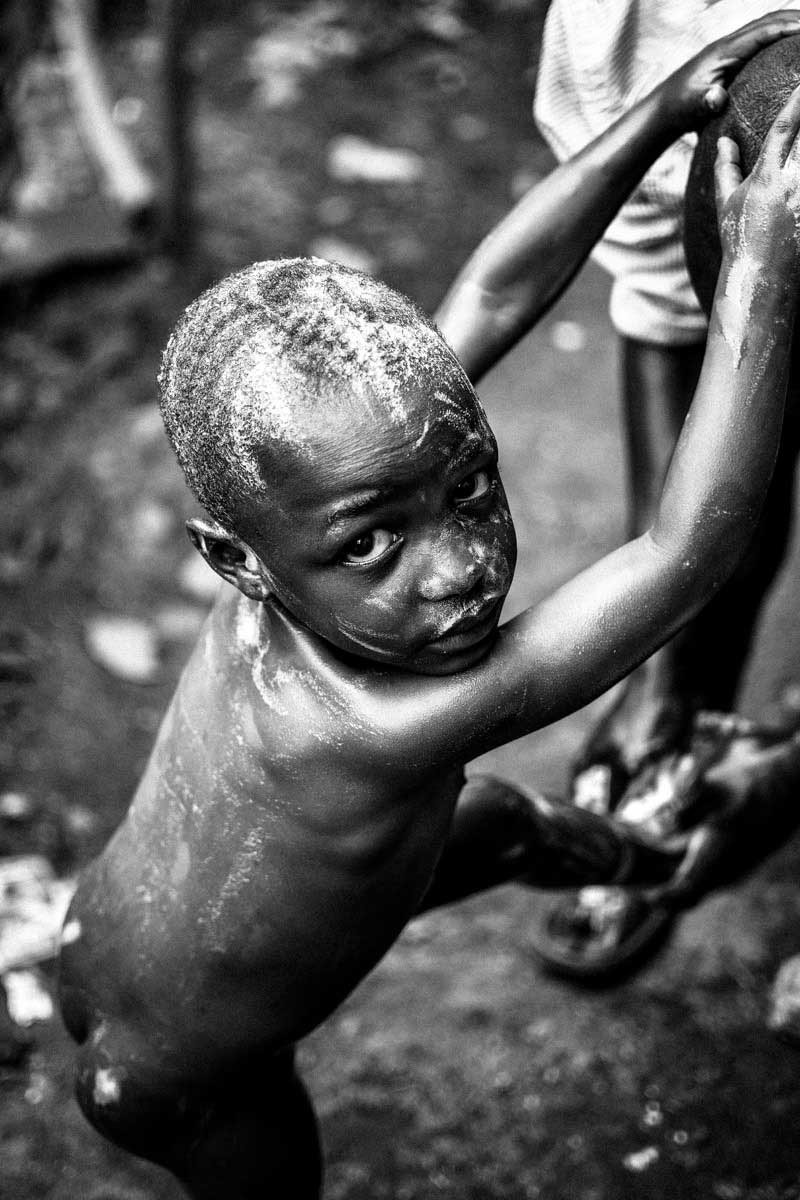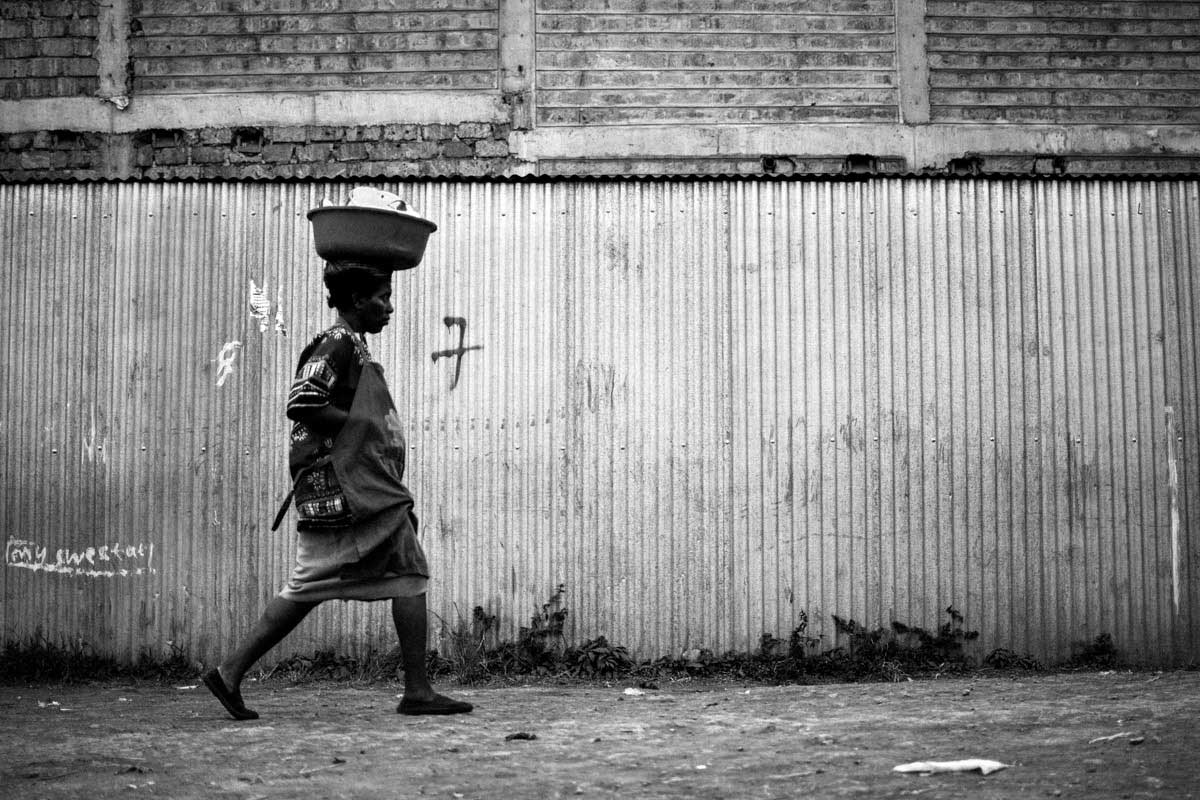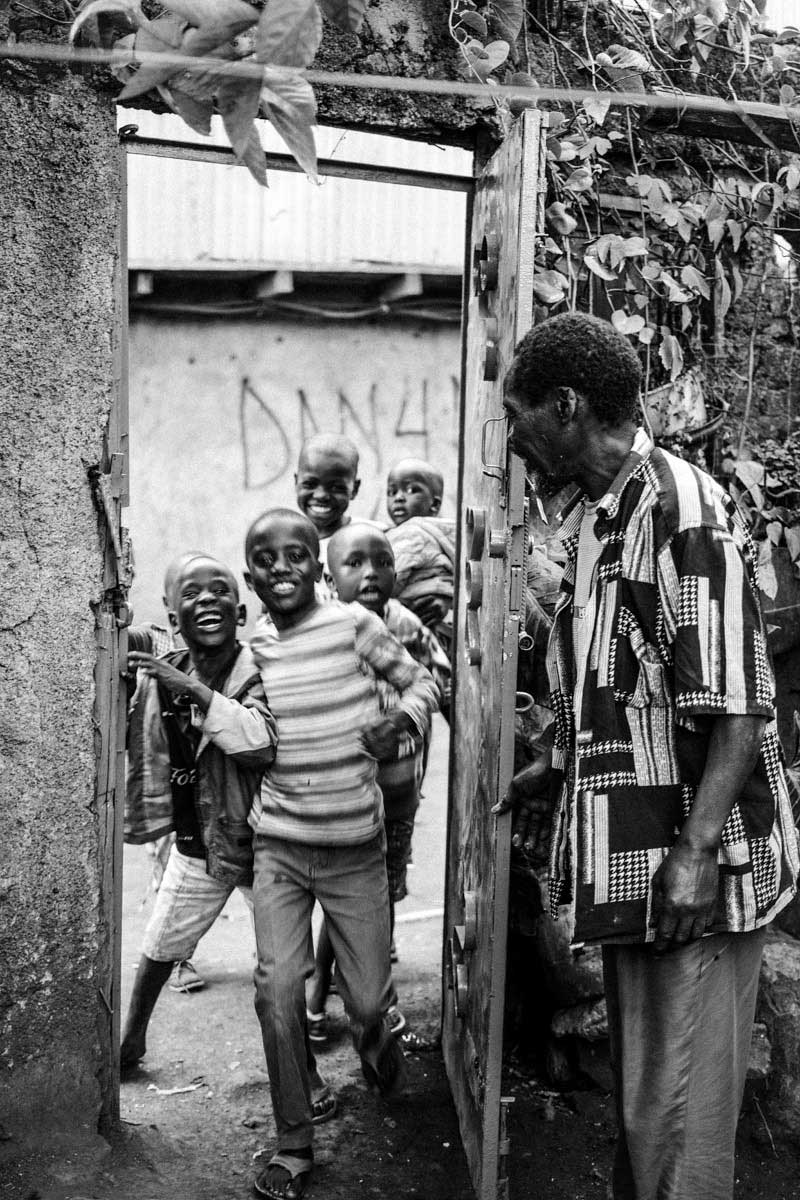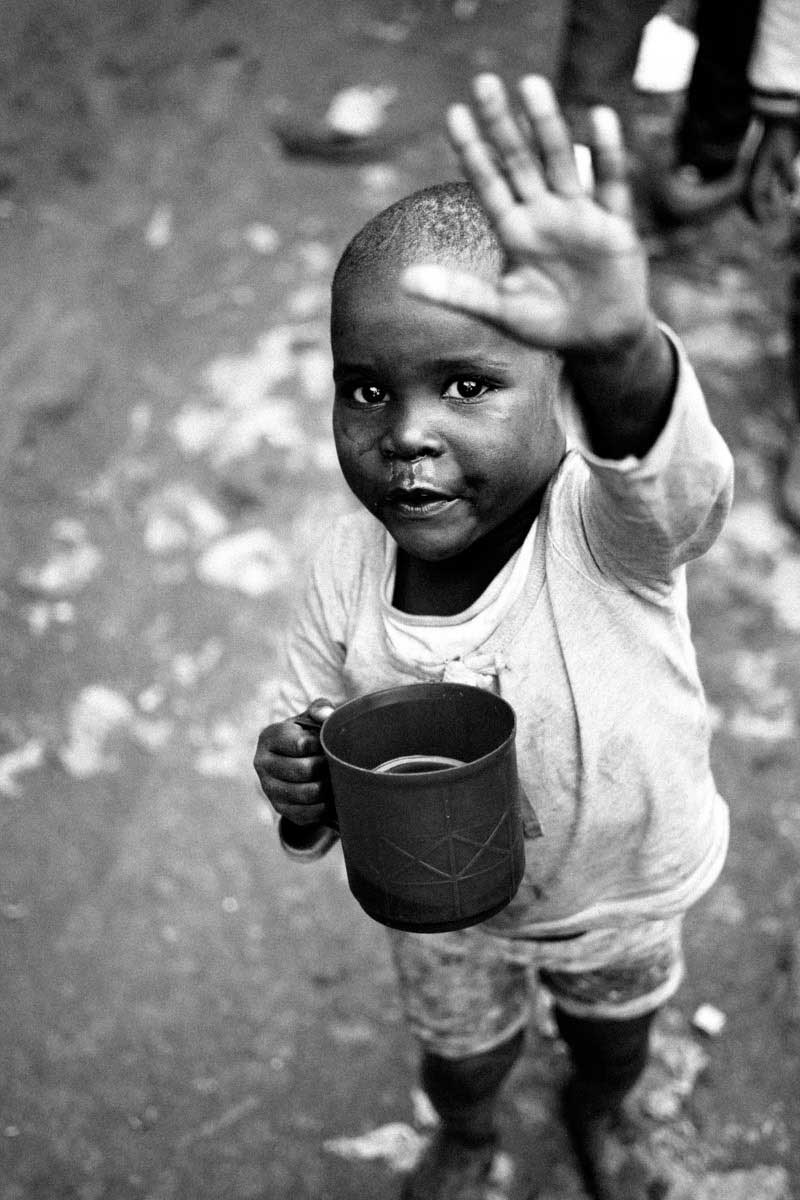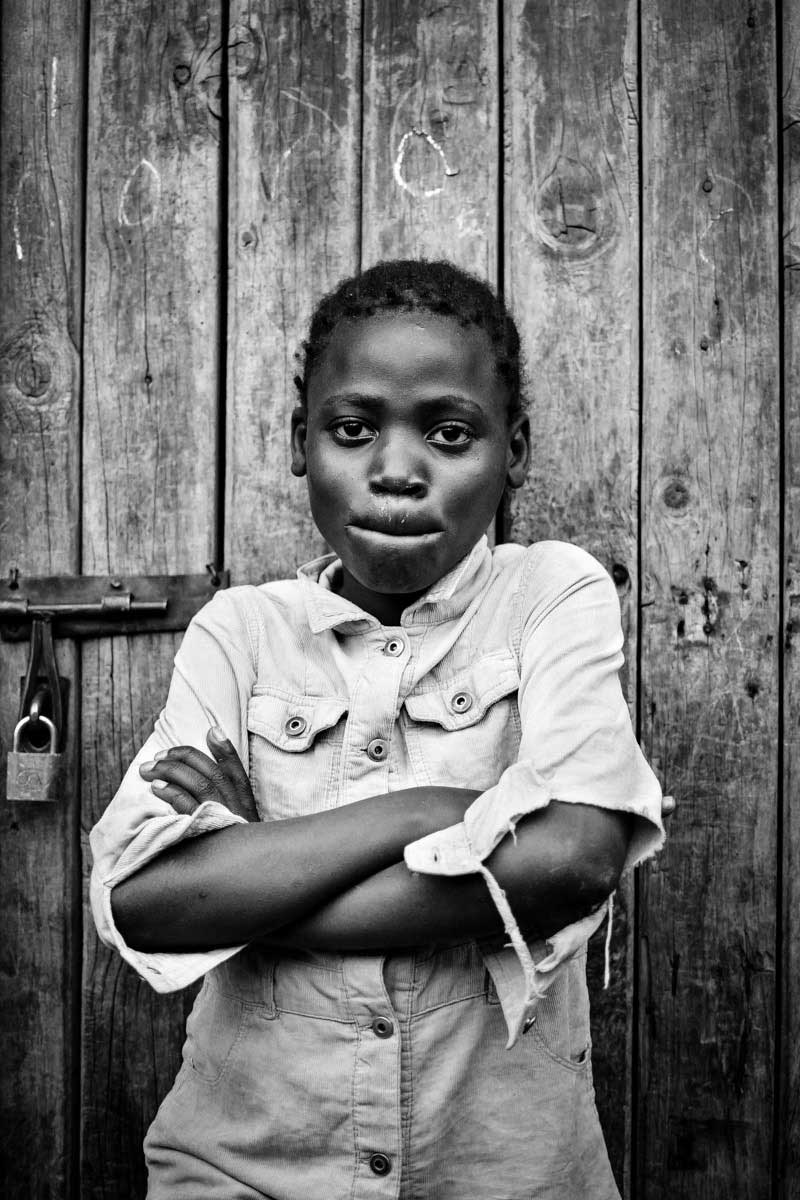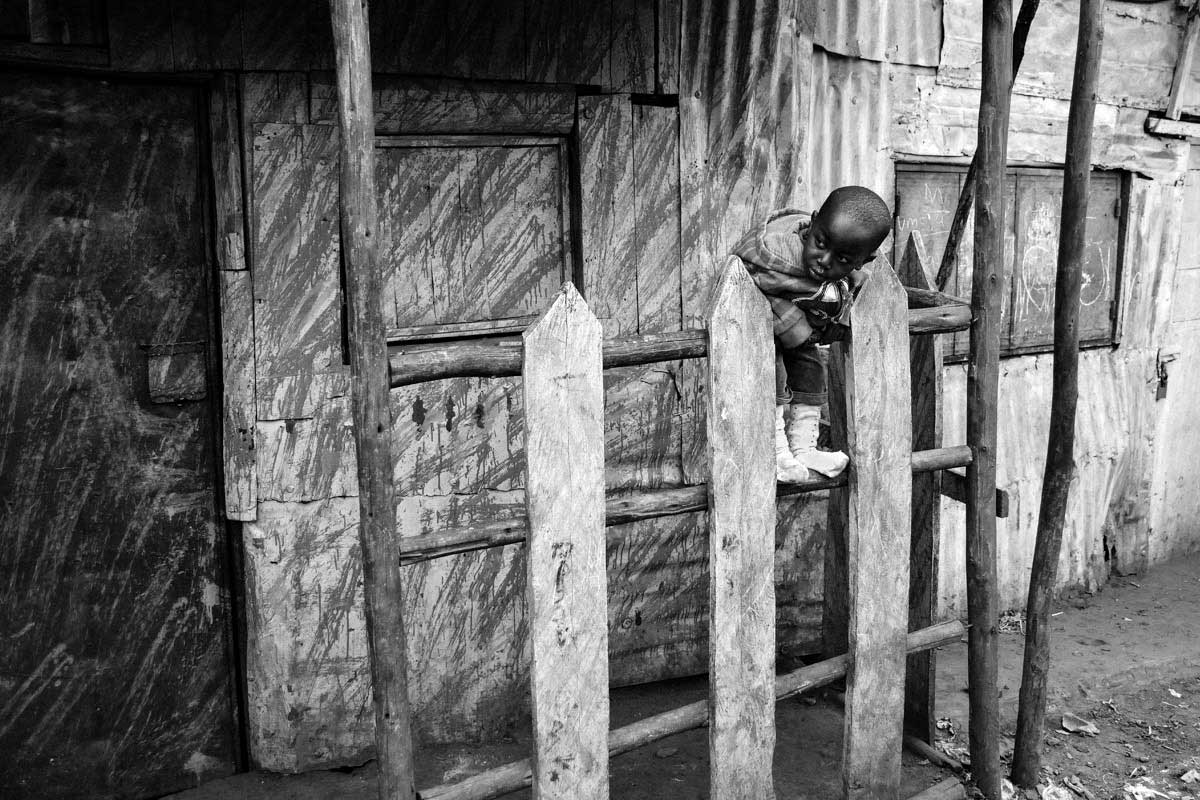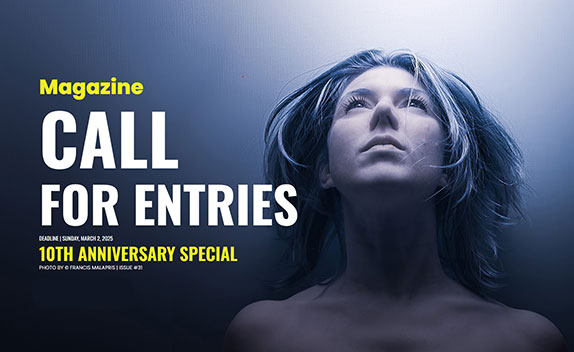Kibera. The largest slum in Africa. With absolute certainty can not say it, but it’s pretty huge, especially population density. Various sources state different numbers, even over two million, when I asked a local, so he agreed something around a million two hundred thousand. All this on a 2.5 km square.
In the language of the original settlers is Kibre forest or jungle. A slum is not naming owe nothing. Kibera slum is notorious for its high incidence of typhoid, cholera, malaria, and also for high levels of crime. The average age here is 35 years old. Lived here for over 60% of the city’s population. Over 80% of the population has HIV. Over 80% unemployment. Over 50% suffering from malaria. It’s official estimates. Sounds ominous. Is reality really so shocking ?? I spent a month in Kibera to find out.

The city is slowly coming back to life. Not early in the morning, at 9am Kibera begins to recover. Within an hour, it is busy everywhere, dozens of shops offering local products and skills. There sew, cook over there, hairdressers are busy, over there produces articles of all shapes and sizes. Drivers are they trying to get into their “matatu” – small minibuses. It’s a vibrant organism. The bustling, dusty, dirty, fast. It takes time to get used to. For a man causes many sensations at once. Like when you read a poem lost generation, cursed poets .. time to find that special affection. Personally, it took me almost a month before I could appreciate the “beauty” of this place. Contrast hard life, differences in perception and friendly people is a very powerful combination that pulls you back and will catch up after time.
For the West’s local environment unacceptable stench, mess, overpopulation, hygiene .. but it’s not terrible, so that man could get used to. Large majority is really poor and must strive for daily basic needs. But what is important is that they have access to them and quite cheaply.Electricity, water, health, sanitation, waste, hygiene.. it’s all problem in Kibera, but not so hopeless how you are imagine.It is far to your expectations after reading the information from various resources.
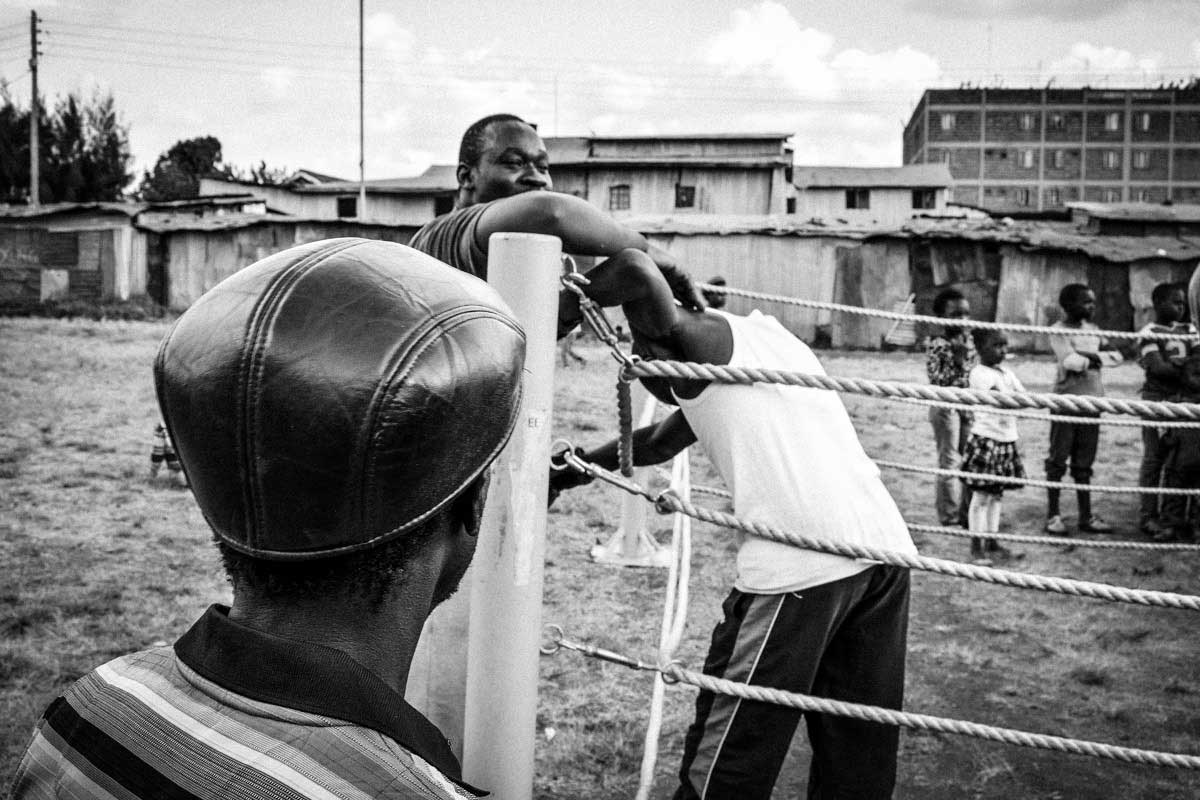
Kibera is basically a center of trade. Instead creative and skilled people who daily offer their products and services.
In Kibera, you can find absolutely everything you can think of. From clothing through food after the latest electronics.
Surprising is not it? You don’t see people impoverished, troubled, who do not have access to basic needs. Kibera exceeds your expectations. Forget the plain where is the television futuristic concept and kids running around with a bloated belly. Smart phones are not suprising here.
So.. is it so terrible place for living? My answer is no. Kibera is far from the place of misfits, people without effort or future. On the contrary, I have met many great, kind, inspirational people.
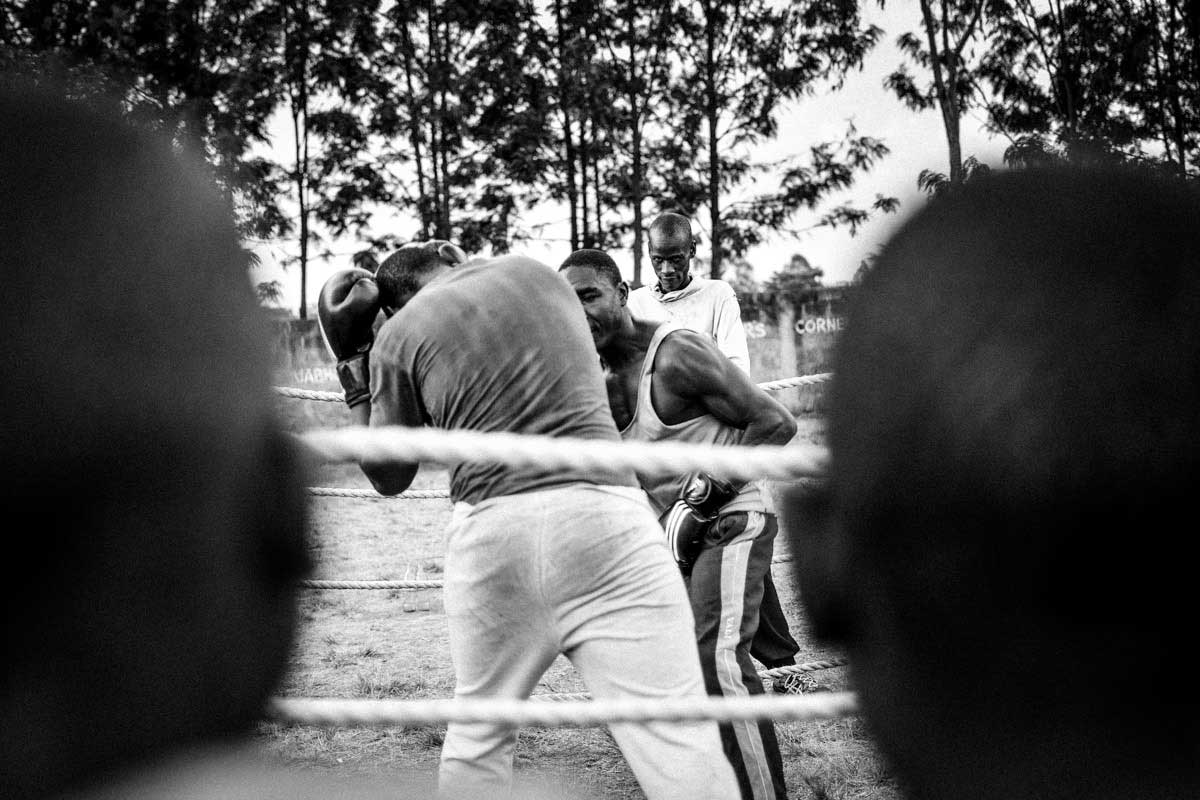
In Kibera is hard to live because of the environment that suffers because of high crowding. The biggest problem linked with that is ubiquitous waste and dirt. There are many complications, it is rough, but what is crucial is that is possible live there. Despite all negation. And in this “jungle” day after day training local athletes and training hard and dreaming of a better tomorrow. Under the guidance of coach “Tanker”, a member of the national boxing team in super bantamweight, they giving everything of themselves. In harsh conditions, they decided to discipline and drudgery.”The major complication I deal with is when training boxers who have ill motives of either being bad men after acquiring the basic skills. This is always a big disappointment.” “We’re missing shoes, gloves, bandages, the very basics, ” Tanker says.”It’s very difficult, people do not have extra money. They are happy to buy food. They haven’t money for sport.” From personal finance andcontributions built up a “center” for young people. Everything for free. “I have children from 7 to adults around 30” couch says.
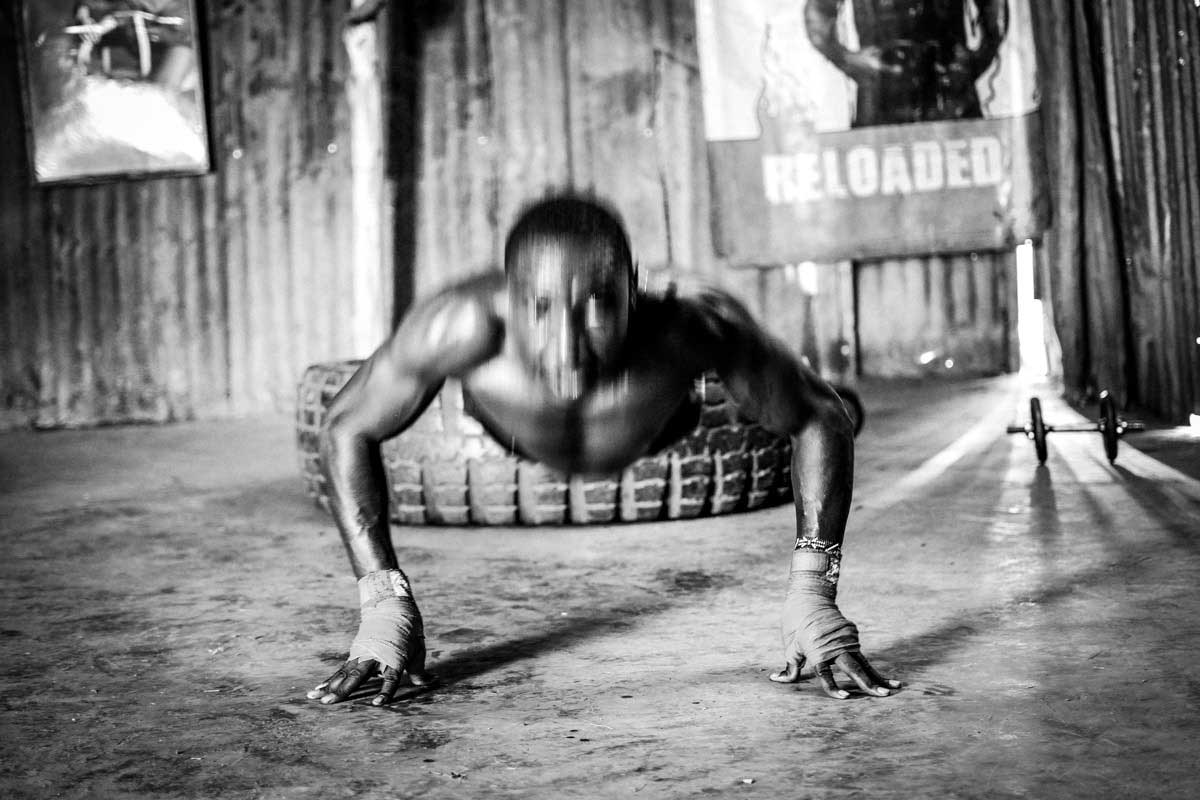
Outdoor plac respectable dimensions where reigns cleanliness and order.Boxing gym with an area of 4×6. No windows and only one door through which shines only light. Four walls of corrugated iron, inside
two punching bags, a few chairs, a old bench machine and on the floor tractor tires. All this under the roof where the radiating uncomfortably hot. They are here every single day for 3 hours daily, someone longer. It depends if they have a job. Someone is selling at the market. Someone working as a craftsman in the street, where it produces a variety of iron objects, including animals. On the outside place rises a new training ring. “We built a new ring”, says enthusiastically. Not regular size, it is much smaller, but local enthusiasm makes him the largest ring in the country. Success is not guaranteed, but for many of them it is a win already, regular discipline that keeps them away from the street. Boxing is not only a means to defend the place, where crime is rampant. Box gives them hope, they want to get into the national team and to fulfill his dream in international arena like “Tanker”. Succeed. Outside Kibera, out of poverty through personal will and determination. [Official Website]
